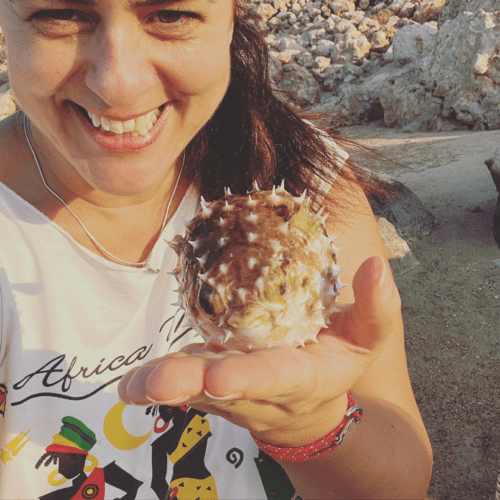
Living in a tank could be exhausting and boring for turtles since they like to explore and search for food and new activities. Even the largest tanks can’t provide enough occupation for your aquatic pet. However, can you take your turtle out for a walk?
Taking a turtle for a walk can be beneficial as it provides natural sunlight, exercise, and new stimulation that can’t be provided in a tank. To ensure that the turtle benefits from the walk, stress like other pets, loud noises, or dangerous obstacles should be avoided.
So, does it make sense to take your turtle for a walk? Does this activity have more disadvantages than benefits? What can you do to keep your turtle safe while letting it walk? Read this article to find out!
Table of Contents
Is it a good idea to take your turtle for a walk?
Taking your turtle out for a walk is a good idea but only in a controlled environment. There are some benefits that your pet can enjoy. For instance, walking around a grassland can allow your turtle to explore a new habitat.
It can find new activities that will provide stimulation. Additionally, your turtle can get some natural sunlight that will prove beneficial for vitamin D synthesis and will keep its bones healthy.
However, letting your pet roam outside can have some disadvantages. First, you might expose it to other animals. That might cause stress or lead to diseases for both your turtle and the other animal.
Second, there is a possibility that you might lose sight of your pet. Turtles let loose might die, become invasive or carry disease that kills other turtles.
Additionally, you need to make sure that you know the grassland or meadow where your turtle will walk very well. Obstacles in the grass like sticks and sharp stones might hurt your pet, while herbicides in the grass might cause poisoning.
Tip: If you want to take your turtle for a walk, choose a place you know well – for instance, your backyard. If the spot is new, try to separate a small area, clean it up and set boundaries, so your pet doesn’t face any dangers.
What are the benefits of taking your turtle out for a walk?
Turtles have to spend at least two to three hours in the UVB/A light to dry themselves and synthesize enough Vitamin D3. As you probably know, every aquatic turtle needs a basking area in or above its tank where it can sit under the UVB light for a few hours.
However, there is no substitute for natural sunlight. Even a couple of minutes in the sunshine a day can improve the health of your turtle.
Additionally, taking a walk could be an enriching experience for your turtle since it will explore a new habitat outside its tank. Under your supervision, your pet will have contact with its natural environment and roam for food and bask in a new place.
What conditions does your turtle need outside?
If you decide to take your pet out, do that only in nice weather – no rain or strong wind! Your turtle should be able to enjoy the sun and hide in the shadow if it gets too warm.
The ideal temperature would be between 70 and 90 degrees Fahrenheit (21 to 32 degrees Celsius). Since a basking area in its usual habitat is a must, you can take your turtle out for a walk only once a week for about 30 minutes.
Turtles get stressed easily and wouldn’t feel comfortable being taken out of their tank too often.There are two important rules that you need to follow if you want to keep your pet safe:
Rule 1: Let it walk only under your supervision!
Rule 2: Don’t let any other pets outside while your turtle is in your backyard!
Leaving your turtle outside alone or letting it walk near other animals can turn out very dangerous. Keep on reading to find out more about the dangers of an unsupervised walk.

What are the dangers of letting your turtle go out?
Contact with other animals
If you want your turtle and your other pets to stay healthy, you shouldn’t allow a close meeting between them. Since dogs and cats are predators by nature, your turtle might get attacked by them at any time.
Additionally, every animal can be a host for different microorganisms that can either be harmful, helpful, or have no effect on its health.
For instance, turtles commonly carry the Salmonella bacteria on their skin and shell. In dogs and cats, this microorganism causes diarrhea and discomfort. Turtles, however, are just carrying it around and never get sick.
That’s why you should always make sure that you don’t let your other pets go anywhere near your turtle while it’s taking a walk. Of course, you should pay attention yourself since Salmonella is highly contagious for humans as well.
Losing your turtle
You probably think that turtles are slow animals that can never escape. Well, that’s not true! Most turtles walk at a speed of about 2 MPH (3.2 km/h).
Almost as fast as a human. If you lose sight of your pet for a minute, you might not be able to find it again. Losing your turtle in the wild might cause a few problems.
Your pet will not be able to search for food on its own and it probably won’t survive. In case it lives, however, you might create an even bigger problem for the ecosystem.
Most aquatic turtles are invasive. Therefore, they can threaten native biodiversity by out-competing native species for food and habitat. Additionally, the Salmonella issue is still there. Releasing your turtle in the open might cause a Salmonella outbreak in wild animal populations.
Tip: Many turtle owners tie a colorful balloon around their turtle’s carapace to make it visible. That’s an easy way to keep an eye on your turtle.
Stress and chemicals
As we already mentioned, it’s a great idea to create a walking spot in your yard instead of taking it to an unknown meadow somewhere in the countryside. Don’t get us wrong, green meadows are wonderful, but they could hide possible threats for your pet.
There are three simple steps that you need to follow:
- Clean up branches and sharp stones.
Objects might cause injuries on your pet’s skin and carapace. If you don’t notice those, they might lead to a more severe condition that is not easy to treat. - Don’t spray any herbicides or insecticides in the area.
Your turtle likes to snack on plants and insects. If there are toxic chemicals on the grass surface, they might poison and even kill your turtle. - Don’t take your turtle for a walk too often.
Turtles are solitary animals that enjoy their personal space and might get scared easily. They don’t like loud noises or drastic changes in the environment. Therefore, try to take out your turtle for a walk only once a week for a short time.
Can all species be taken for a walk?
The main benefit of taking your pet for a walk is exposure to natural sunlight. Therefore, there are no specific species that shouldn’t enjoy roaming around your backyard.
However, you should be very careful to not let a Red-eared slider escape. That could cause a disaster to your local ecosystem if there are any native turtle species living there.
Red-eared sliders can effectively invade a variety of habitats. They compete with native species for resources. Even if they look cute, they are the nightmare of other turtles.
With their large size, they can be quite the bullies, kicking other species out of their basking areas. As a result, escaped Red-eared sliders lead to slow growth and high mortality rates of native turtles.
Summary
Taking your turtle for a walk can be an enriching experience for both you and your pet. Your turtle will find new activities and get exposed to the natural sunlight.
To keep your turtle safe, you should always choose a place you know well. Also, you need to observe your pet, so it doesn’t escape or have an unfortunate meeting with another animal. If you have other pets, make sure you keep good hygiene since turtles are carriers of Salmonella.

Marta, the driving force behind WaterWorldCraze.com, holds a Master’s degree in Marine Biology and has extensive experience in water sports and activities. With over 7+ years of hands-on experience in marine research and conservation, she has participated in numerous underwater expeditions and projects. Her passion for the aquatic world shines through in her expertly curated content. Join Marta as she explores the wonders of marine life and shares her adventures. Connect with her on Instagram @marinebiologymarta for more insights and updates.

